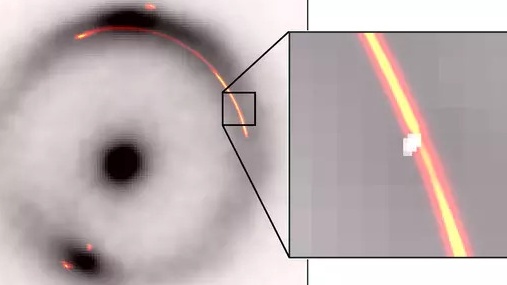After 4.5 Billion Years, Sunshine Finally Figured Out
A giantunderground experiment has given researchers their first glimpse into the heartof the sun and the subatomic particles that shine down on Earth everyday.
Scientistshave long theorized how these particles, called neutrinos,are formed in the solar inferno, but direct proof has been hard to come by.Neutrinos can give scientists a priceless glimpse into the inner workings ofthe sun because they arrive on Earth virtually unchanged from when they leftthe sun's interior.
Princetonresearchers, working at the underground Gran Sasso National Laboratory in Italy, have made the first real-time observations of low-energy solar neutrinos, fundamentalparticles that are created by the roiling nuclear reactions inside the sun and thatstream in vast numbers from the sun's core.
In stars aboutthe size of the sun, most solar energyis produced by a complex chain of nuclear reactions that convert hydrogen intohelium. These reactions can take several different routes, but they all end inthe same product: sunshine.
Steps alongtwo of the routes require the presence of the element beryllium, and physicistshave theorized that these steps are responsible for creating about 10 percent ofthe sun's neutrinos.
Until now,technological limitations have made it hard todetect neutrinos because they rarely interact with other forms of matter.
The GranSasso lab's huge Borexino detector, located more than 0.62 miles (1 kilometer) underground,overcame the limitations and observed the low-energy neutrinos. The results confirmedthe two nuclear steps that involve beryllium, showing that physicistshave been on target at least about those routes to neutrinos.
Breaking space news, the latest updates on rocket launches, skywatching events and more!
However, thatconfirmation makes scientists more certain that they are also correct about howthe other processes that create sunlight work, said Princeton physicist FrankCalaprice, principal investigator of the team.
"Ourobservations essentially confirm that we understand how the sun shines," Calapricesaid. "Physicists have had theories regarding the nuclear reactions withinthe sun for years, but direct observations have remained elusive. Now weunderstand these reactions much better."
- Video: Sun Storms
- Images: Hyperactive Sun
- Mysteries of the Sun
Join our Space Forums to keep talking space on the latest missions, night sky and more! And if you have a news tip, correction or comment, let us know at: community@space.com.

Andrea Thompson is an associate editor at Scientific American, where she covers sustainability, energy and the environment. Prior to that, she was a senior writer covering climate science at Climate Central and a reporter and editor at Live Science, where she primarily covered Earth science and the environment. She holds a graduate degree in science health and environmental reporting from New York University, as well as a bachelor of science and and masters of science in atmospheric chemistry from the Georgia Institute of Technology.
